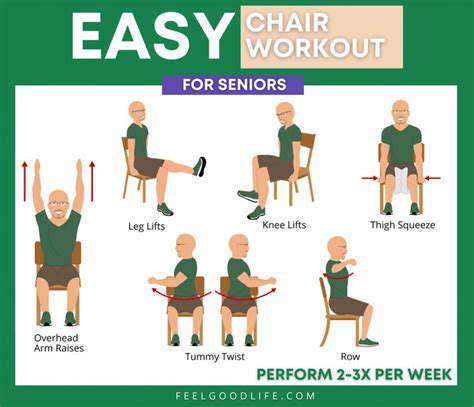Staying Motivated to Walk Regularly: Senior Exercise Tips
Incorporating Walking into Your Lifestyle: Practical Strategies

Walking for Health and Wellness
Adding walking to your routine offers countless health benefits. It’s a low-impact exercise easily woven into daily life, whether a brisk lunchtime stroll or a leisurely evening walk. Walking strengthens the heart, lowers blood pressure, and boosts cardiovascular health. It also aids weight management by burning calories and maintaining a healthy weight.
Regular walking also improves mental health. Physical activity releases endorphins, lifting mood and easing stress and anxiety. This makes walking a great tool for stress management and promoting calm.
Designing a Walking Routine
Consistency is crucial for maximum benefits. Start with realistic goals, like 10,000 daily steps or 30-minute walks most days. Early on, consistency matters more than intensity. Gradually increase duration or intensity as fitness improves.
Add variety to your routine. Explore new routes, include hills, or try intervals to stay engaged and challenge yourself. Walking with a friend or group adds motivation and social interaction, making it easier to stick with it.
Walking for Specific Health Goals
Walking can be tailored to meet health goals. For weight loss, incorporate brisk walking for longer durations. It also improves balance and coordination, especially for older adults or injury recovery. Walking is adaptable for those with mobility issues, fitting individual needs and abilities.
Walking also helps manage chronic conditions like diabetes and arthritis. It lowers blood sugar and reduces joint pain, making it ideal for these conditions. Walking enhances overall physical function, even for those with limited mobility.
Benefits Beyond Physical Health
Walking’s perks extend beyond physical health. It improves sleep by promoting relaxation and reducing stress. It also offers mindfulness and reflection time, clearing mental clutter. Walking in nature boosts well-being and lowers stress.
Walking strengthens social bonds. Walking with friends or family builds community and shared experiences. It’s also a chance to connect with nature and appreciate surroundings, with fresh air and sunlight boosting mental well-being.
Staying Consistent and Celebrating Successes

Maintaining a Consistent Routine
Consistency is the backbone of long-term success, especially in personal well-being. A steady routine—whether daily workouts, meditation, or hobby time—creates stability and predictability. This reduces stress and anxiety, helping you handle challenges better.
A consistent routine fosters control and empowerment. Knowing what to expect lets you plan and align with your needs, which is invaluable during uncertainty.
Celebrating Small Victories
Big goals are important, but small victories pave the way. Celebrating these milestones, no matter how small, keeps motivation high and outlook positive. Acknowledging progress reinforces belief in your ability to succeed.
Small wins build confidence and resilience, reminding you of your capability and encouraging persistence through obstacles.
The Importance of Self-Care
Self-care isn’t selfish—it’s essential. Taking time for activities that nourish your mind, body, and spirit is key to well-being. Whether a relaxing bath, nature walk, or quiet reflection, prioritizing self-care boosts health and happiness.
Recognizing and Acknowledging Your Efforts
Acknowledging your efforts boosts motivation and self-esteem. Whether achieving a big goal or completing a tough task, appreciating your hard work fosters a positive mindset and builds self-respect.
Building a Support System
A strong support system is invaluable. Surround yourself with encouraging, understanding people who offer emotional support and practical advice. They help you stay on track during tough times and are vital for personal growth.
A solid support network provides encouragement and perspective, helping you navigate challenges with confidence.
Maintaining a Positive Mindset
A positive mindset is foundational for well-being. Focusing on the good, practicing gratitude, and staying optimistic impact emotional and mental health. Positivity helps face challenges with resilience.
Cultivating positivity is a conscious choice, requiring effort to focus on the good, even in hard times.
Consistency in Lifestyle and Habits
Steady lifestyle choices and habits are key to long-term well-being. Healthy eating, regular exercise, and enough sleep create balance and stability. These habits form a virtuous cycle, where good choices lead to good outcomes, enriching your life.
Consistency in these areas builds a strong foundation, leading to a more fulfilling life.











